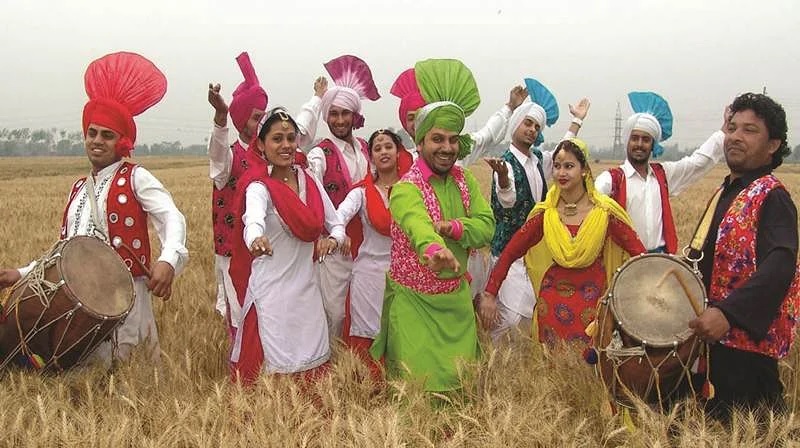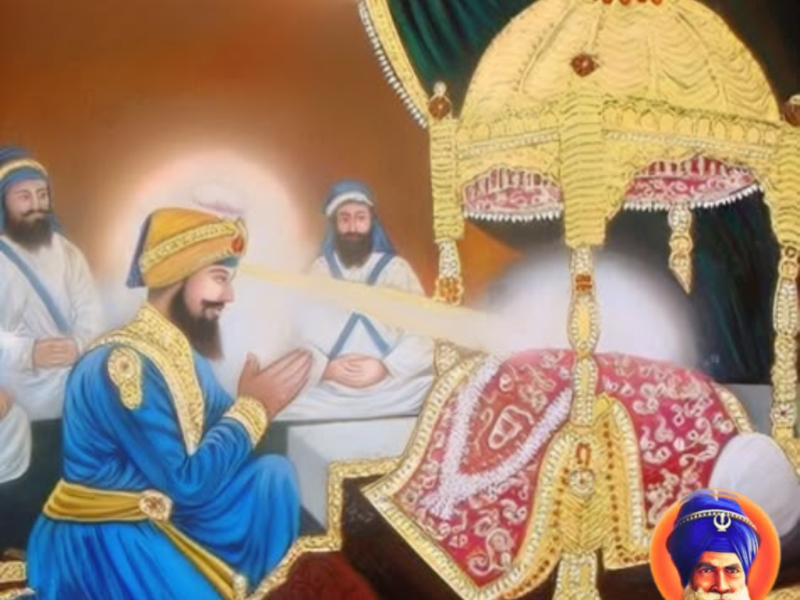Traditionally observed yearly on April 13 and occasionally April 14, Vaisakhi , often spelled Baisakhi, is the first day of the month of Vaisakh and is largely celebrated in Northern India as a celebration of the spring harvest. Furthermore, this holiday is also observed by various Indian communities and the diaspora. Vaisakhi is an important harvest festival in terms of culture, but some people also believe it to be the official start of the Indian Solar New Year. However, this is not a widely held idea because Hindus do not celebrate a shared New Year’s Day; instead, some people celebrate the month of Chet before the New Year.
In addition to having significance as the harvest festival, when Sikhs hold kirtans, visit nearby Gurdwaras, participate in neighborhood fairs, hold Nagar kirtan processions, hoist the Nishan Sahib flag, and congregate to socialize and share festive foods, Baisakhi also commemorates significant historical occurrences that took place in the Punjab region in the history of Sikhism and the Indian subcontinent. The main Sikh holiday of Vaisakhi commemorates the establishment of the Khalsa order on April 13, 1699, by Guru Gobind Singh, the tenth Guru of Sikhism. Later, on April 12, 1801, to coincide with Vaisakhi, Ranjit Singh was crowned Maharaja of the Sikh Empire, establishing a united political entity. Vaisakhi was also the day Bengal Army officer Reginald Dyer gave the order for his forces to open fire on a crowd of protesters.
An incident that would become known as the Jallianwala Bagh Massacre had a significant impact on the history of the Indian independence movement.
Based on the Hindu Vikram Samvat calendar, this festival is also known as Vaisakha Sankranti. It is also known by different regional names in other areas of India. For many Hindu communities, the festival is an opportunity to perform mandatory Daan (charity), especially hand fans, water pitchers, and seasonal fruits, as well as to visit temples, meet friends, participate in other celebrations, and take a ritual bath in rivers such as the Ganges, Jhelum, and Kaveri. At the locations of Hindu pilgrimage, community fairs are held. Processions carrying temple deities are carried out in numerous locations. Even though Vaisakhi was formerly a Hindu grain harvest festival.
Date
In the twenty-first century, Vaisakhi is celebrated on the 13th or 14th of April each year. It did, however, fall on April 11 in 1801 AD. This is because the dates of Sankranti celebrations like Vaisakhi change gradually over time. In the year 2999, Vaisakhi would fall on April 29. The celebration falls on the same day as other new year’s celebrations held across the Indian Subcontinent, including Pohela Boishakh, Bohag Bihu, Vishu, Puthandu, and others.
Pronunciation and etymology
An Apabhraa variant of the word Vaisakhi or Baisakhi developed from the word Vaishkh (), which was derived from the name of the Indian month of Vaishakha.
In Assam, Bengal, Bihar, Himachal Pradesh, Haryana, Kerala, Odisha, Punjab, Tamil Nadu, Uttar Pradesh, Uttrakhand, and other Indian states, some Hindus observe the traditional solar new year on the first day of Vaisakh. However, not all Hindus celebrate this new year. The five-day Diwali festival coincides with the new year celebrations for some people, such as those in and around Gujarat. Others celebrate the beginning of the year on Cheti Chand, Gudi Padwa, or Ugadi, which occurs a few weeks earlier. It is a time of plenty for the farmers as the harvest is finished and the crops are prepared for sale. In the Hindu religion, festivals and special thanksgiving pujas (prayers) are common. It is offered in the Vaisakhi-like Vanis of the Saints that are in Satlok.
Hindus refer to it by a variety of regional names, even though the celebrations and their significance are the same. Hindus commemorate it by bathing in revered rivers because they think that on Vaisakhi, the river goddess Ganges descended from Svarga to earth. The Ganges, Jhelum, and Kaveri are a few rivers that are particularly revered. Hindus go to temples, socialize with friends, and celebrate with seasonal fare.
Haridwar
Hindus believe that River Goddess Ganga fell to Earth from heaven on the day of Vaisakhi.
A significant Hindu pilgrimage center, Haridwar hosts one of India’s biggest Vaisakhi fairs. Around 50 lakh (5 million) pilgrims congregate at Brahm Kund in Haridwar during this occasion to take a bath in the Ganga river.
Hindu Punjabis
Shrines for Baba Ram Thaman
The Vaisakhi fair at the Hindu Shrine of Katas Raj was well-known in the Undivided Punjab.
[Around 10,000 pilgrims, predominantly Hindus, made the trip. Similar to this, since the 16th century CE, Bairagi saints from all over India have flocked to the shrine of Bairagi Baba Ram Thaman, where a Vaisakhi fair has been conducted yearly and attended by some 60,000 pilgrims.
The most impressive Vaisakhi fair is held in the Thakurdwara of Bhagwan Narainji in the village of Pandori Mahatan in the Gurdaspur district of Punjab. The fair lasts for three days from the first to the third of Vaisakha.The festivities begin on the morning of the first Vaisakha with a procession in which Brahmacharis transport Mahant in a palanquin.








